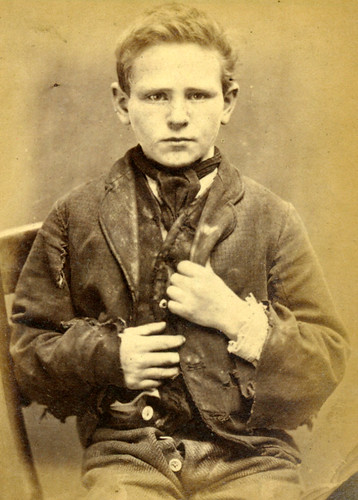
(at left: some cooking not in Lent...)
The Basics of Medieval Lenten Dietary Practices
Historical Background
Language-
The Teutonic word ‘Lent’ meant ‘Spring Season’
The Latin term was ‘quadragesima’, the Romance language descendents were the French ‘carême’. Italia ‘quaresima’, and the Spanish ‘cuaresima’, meaning 40 days or fortieth day. The Germanic term was ‘tessarakoste, meaning fortieth.
Early Customs
There were Biblical precedents for an observation of forty days, of a 40 day fast or a trial of forty days. They include:
-the 40 days and 40 nights of rain during the Flood;
-the 40 days that Moses spent on Mt Sinai with God (returning with the two tablets of the Law);
-the 40 days that Jonah gave Nineveh to repent (which they did);
-the 40 days and nights that Elijah spent on Mt Horeb, in fasting and prayer;
-the 40 days Jesus spent in the desert in fasting and prayer (culminating in the Great Tempation).
Tradition holds that Jesus spent 40 hours in the Tomb after his death, and then was present for 40 days between the Resurrection and his Ascension, followed by 40 days before Pentecost.
For the first Christians there quickly became a 40 day observance, with 40 hours of fasting before Easter.
The Early Church Observances
The first three centuries show diverse practices of pre-Easter observances. There was a gradual development in the length and expression of the Lenten observance.
Eusebius quotes St. Irenaeus’ letter to Pope Victor regarding a controversy in the timing of Easter and in the length of the fast– some observed 1 day, some 2, others several, and others 40 days and 40 nights. Rufinius’ translation (late 4th c.) claims that Irenaeus insisted on a fast length of 40 days. (Modern criticism suggests that Rufinius’ translation and views were fairly accurate; however, it appears that Irenaeus knew that there was no Apostolic origin to these traditions.)
A few years later a controversy arose between Tertullian, who declared a light Catholic observance– “days on which the Bridegroom is taken away”, that is, Friday and Saturday of Holy Week; and the Montanist strict observance for a fortnight– xerophagiae– a ‘dry fast’ (though there is no indication of a 40-day fast).
It appears that there is no 40-day fast previous to the Council of Nicaea, and no mention of Lent per se in St. Dioysius or Didascalia; there was Pascal fasting but not 40 days.
The Apostolic Church apparently observed a weekly commemoration, not yearly– Friday of the Death of Christ, and Sunday of the Resurrection. This may have contributed to the wide divergence in practice through the end of the 2nd. Century. A yearly vs. weekly observance developed over time, with some fasting being shorter, but more strict and severe.
The first mention of a 40-day fast is at the Council of Nicaea c. 325. There was still some question as to the time of observance, but Easter was definitely a moveable feast.
St. Athanasiusin 331 entreated his flock to observe Lent for 40 days preliminary to Holy Week, with strict fasting during Holy Week, possibly a dry fast. (This was possibly as early as the 3rd c. as per Dionysius.) In 339 he noted that the fast of Alexandria suggested fasting “to the end that while all the world is fasting, we who are in Egypt should not become a laughing-stock as the only people who do not fast, but take pleasure in those days”.
This was backed up by the alleged ‘Apostolic Constitutions’ and St. John Chrysostom, and is generally followed in Eastern tradition.
As early as the 5th century, the Church Fathers were claiming Apostolic origins to their practices. St Leo (d. 461) declared that abstention would “fulfill with their facts the Apostolic institution of the forty days.” (“Ut apostolica institutio quadraginta dierum jejuniis impleatur”) Socrates Scolasticus (d. 433) and St. Jerome (d. 420) used similar language. (Modern scholars don’t agree with these Church Fathers regarding the origins of the observance.)
In Rome in the 5th c. Lent was observed for 6 weeks, three of those actually fasting, exclusive of Saturday and Sunday. This seems to have not been continuous, but was the 1st, 4th, and 6th weeks, and may have been limited to baptismal candidates– a had a possible role in the development of the 40 day fast.
The application of the number 40 is itself murky. It may have been a 40-day fast, or it could have been 40 fast days. In Egeria’s
Peregrinato, Lent was observed in Jerusalem for 8 weeks, with Saturday and Sunday exempted, leaving five days a week x 8 weeks = 40 days. Yet many localities held to six weeks of fasting, Saturday and Sunday still exempted, as in St Ambrose’s “De Elia et Jejunio”.
Pope Gregory the Great (c. 590-604) declared that in Rome there would be 6 weeks of 6 days = 36 days = a ‘spiritual tithing’ (10% of 365 days). Later desires for 40 days of fasting leads to the beginning of Lent on Ash Wednesday rather than the following Sunday.
Apostolic observance of Holy Week is unclear, but an observance was present in Jerusalem at the end of the 4th century, and Egeria leaves a detailed account of that week.
The official ending of Lent is not Easter Sunday, but after the Easter Vigil service on the previous night.
The Basics of Fasting
The Teutonic roots of the word ‘fast’ principally mean to hold, keep, observe, and to restrain one’s self. The early Latin term for Lent- ‘jejunium’, refers to an animal intestine which is always empty.
Thomas Aquinas claims in his
Summa Theologica that fasting is in opposition to the Fall, a sin of Gluttony.
Fasting was seen through history as a signifier of purification, mourning, and penitence. It was an act of self-discipline– a private mortification, but also a public expression of the sins of society.
The act of fasting and abstinence varies. The basic definitions are these:
-a ‘natural fast’– fasting before communion;
-a ‘moral or philosophical fast’, which an individual disposition but can include fasting as self-control in religious communities;
the strictest use of the term denotes abstinence from food as fulfilling the dictates of natural law and the full perfection of ecclesiastical legislation.
The Nature of the Lenten Fast
The specifics of the act of fasting is as divergent as the dates of the Lenten traditions. The primary and most important abstention is from meat. Meat is tasty, and giving it up is a particular reminder of the Fall, and of God’s subsequent anger.
A theologian named Socrates tells us of the 5th century practices:
-abstention from the flesh of every living creature; while others refrain from all but fish, others eat birds as well as fish;
-others abstain from fruit that has a hard shell, and eggs;
-some eat only dry bread, others not even that;
-some fast to the ninth hour (nones– about 3 pm), then partake of various kinds of food;
-some eat uncooked food only.
Epiphaniu and Palladius say that ordinary Christians sometimes have 24 hours without food, especially during Holy Week; those more austere pass Lent with only one or two meals a week.
The ordinary rule for Lent was one meal a day in the evening (eventually settled at nones), with meat entirely forbidden, and in the early centuries wine was also forbidden.
During Holy Week, or at the least on Good Friday, xerophagiae, as ‘dry fast’ was practiced– that is, dry food, bread, salt, and vegetables.
In the early years there seems to have been no dairy prohibition, and occasionally eggs were allowed. However, Pope Gregory wrote to St Augustine of Canterbury in the early 7th century that Christians were to abstain from flesh meat and all things that come from flesh– milk, cheese, eggs, etc. This was later codified in the Corpus Juris. In the 8th century Theodulphus of Orleans declared that there was an abstinence for eggs and cheese, and not eating fish was a mark of exceptional virtue.
There were occasional exceptions from the dairy restriction, in exchange to for contributions to the Church, particularly for building projects. This was sometimes known as the ‘Butterbriefe’ in Germany, and the ‘Buttertower’ in Rouen.
The prohibition on milk and eggs, expressed modernly in the pancakes eaten on Shrove Tuesday, and the giving of eggs on Easter.
Odd loopholes appeared, most notably the eating of ‘barnacle geese’, which supposedly grew on trees and were therefore fruit, and the eating of beavers, which some thought to be a kind of fish. It must be noted that Church authorities generally weren’t fooled by these claims.
There were some relaxations of the fast. The basic list (no meat, eggs, milk) continues to be out of bounds, with only one evening meal, but the hours were somewhat flexible. Charlemagne ate as early as 2 pm, but some put off eating until Vespers (sunset). The introduction of the ‘collation’ in the 9th century (so named because the monks would snack while listening to the
Collationes or ‘Conferences’ of Abbot Cassian read aloud, and the name stuck) allows the concession of a draught of water after manual labor, and then becomes the ‘parvias materiae’– a small snack that is not taken as a meal and did not break the fast (was adopted by Aquinas, etc.). Small quantities of food, up to 8 ounces or so, were permitted after the midday meal. However, Micrologus insists in the 11th century that eating before evening is not keeping the fast.
From the 13th through the 15th centuries categories of exemption from the fast increased. Children, the old, the ill, pregnant or nursing mothers, pilgrims, beggars, and heavy workers were allowed allowances and were able to eat some forbidden foods. St. Clare, in the 13th century, was known for her especially rigorous fasting, but she did note that it significantly undermined her health. By that time the basic feeling was ‘don’t be stupid’– don’t compromise your health.
It may be noted that beyond the theological implications of Lent, there were some basic issues of animal husbandry. In the early spring, much of the livestock was pregnant or nursing newborns– not a time to kill them for meat or to milk them for human consumption. Birds that laid eggs would be allowed to set a clutch and hatch them, providing the next year’s birds. The prohibitions on the consumption of meat, milk, and eggs indeed was a matter of practicality.
The Food
So what did they eat?
FISH.
A LOT OF IT.
Grains, fruits and vegetables, and nuts. Soy was not yet known in Western Europe, and was not part of their diet. The consistent source of protein is fish and seafood. Careful planning was required to make the fast the least onerous as possible, but even the best planning could be disrupted by war, and Lent was especially difficult during those times.
The great lords often had fish ponds on their estates; the common men had to rely on trade, fishing in streams, lakes, and from boats in the ocean. Most fish were harvested and preserved over the autumn and winter before the prices went up. There was active trade in fish, particular from coastal regions to the inlands, were fresh fish was less available. As an example, there was a brisk trade in the 15th century between England and Iceland– mostly cod, both salted and dried, which was known as stockfish. The herring fleets would return in the autumn full of white herring, which was salted, and red herring which was salted and smoked. The economic impact of the fisheries during Lent and other fasting days was considerable, particularly in England. (When the Protestants attempted to ban fasting during Elizabeth I’s reign, she was forced to declare that Friday would remain a fasting day, to save the industry.)
The feasting on Shrove Tuesday was partly social, and partly economy– foodstuffs that would not keep 40 days needed to be used up, hence the traditions of pancakes and pain perdu, a kind of French Toast dish.
Lent was a great strain on the nerves, and there was much complaint everywhere. The ubiquitous red herring seems to have been the most hated. Young clerks would walk in procession on Maundy Thursday dragging red herrings on strings– they would try to step on the herring of the man in front of them, while at the same time attempting to keep the man behind them from stepping on theirs. Those living near the sea were lucky, as they had a greater variety of fish and other seafood and weren’t as reliant on herring. There were also many attempts to find loopholes in the restrictions. Sweetmeats (little candies and cakes) and candied spices were allowed, and these sweets and dainties brightened the fast a bit. Figs and dried plums were especially popular. Fruits also helped to fill in for recipes as a substitute for meat, such as in fritters. The most common ‘fill-in’ food was almonds, which were beaten into a paste to make illusion food (our Cadbury eggs are a remnant of this tradition), or pounded and drained for almond ‘milk’ or cream, which was substituted for dairy products of all sorts. And wine and beer made these things a bit more bearable.
Lent ended with much feasting on Easter– if you’d set aside for it, otherwise you were at the mercy of the suddenly inflated food prices. And care still had to be taken, as the harvest was yet several months away.
And example of a recipe for use in Lent is found in the English cookbook
Curye on Englisch, from the late 14th century. This translation and redaction are done by David Friedman and are found in his
Miscellany, which is webbed at http://www.pbm.com/~lindahl/cariadoc/desserts.html#29
Frytour of Erbes
Curye on Inglysch p. 132 (Form of Cury no. 156)
Take gode erbys; grynde hem and medle hem with flour and water, & a lytel yest, and salt, and frye hem in oyle. And ete hem with clere hony.
3 c flour
2 1/4 c water
1/4 t yeast
1/8 t salt
oil
honey
fresh herbs:
2 1/2 t sage
1 1/2 t thyme
6 T parsley
1 T oregano
Dissolve yeast in 1/2 c water, add salt to flour; when yeast is foamy, add yeast and rest of flour to water. Let sit while herbs are chopped and ground; note that quantities of herbs are after chopping. Divide batter in 4, add one kind of herb to each; or add four times as much of any one of the herbs to the whole batter. Fry in 1/4" deep oil by 1/2 T spoonfuls. Made about 3 dozen 2.5" fritters.
Bon Appetit!




